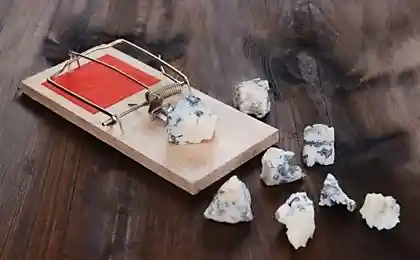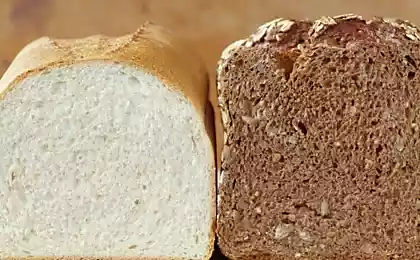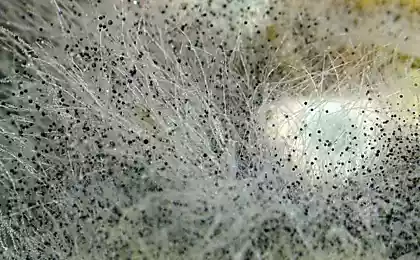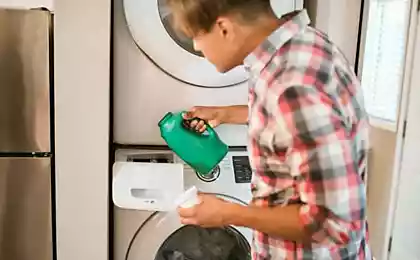986
Meet - mold
Mould - one of the oldest living organisms on Earth. She appeared 200 million years ago and learned to survive in any environment: in radiation, arctic ice, and open space. It saves lives and can kill.
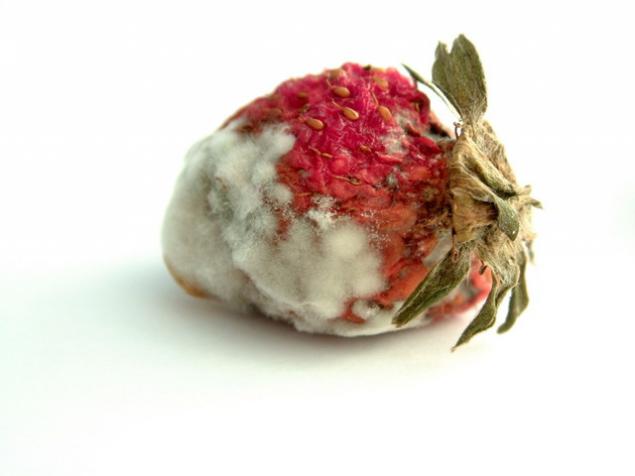
Smart mold
Remember the old experiment where a rat is to find the right way in the maze to get food. So, as the Japanese scientist discovered Toshuki Nakagaki, mold cope with this task just as well. In 2000, he conducted an experiment by placing near the entrance to the labyrinth molds «Physarum polycephalum», and the output of a sugar cube.
Mould immediately started up "germs" that aside sugar, fungal spores filled the entire space in the maze razdvaivayas at every intersection. As soon as any of the processes got stalled, he turned back and looked for a way in the other direction. Microscopic fungi only took 4 hours to complete all the moves a maze and find the right way to sugar.
But what is most interesting when already past the maze mushroom mycelium otschipnuli piece and again placed at the entrance to the labyrinth, putting the end of sugar - one of the shoots unerringly chose the shortest way out of the maze and sugar, and the second a "scrambled" on the walls of the maze and crawled across the ceiling. Thus, a simple mold discovered not only the rudiments of memory, but also the capacity for innovative ways of solving problems, which indicates the presence of the fungus intelligence.
Dangerous mold
Mould accompanies us everywhere, she lives in huge colonies bathrooms, apartments, ventilation shafts, and that the most unpleasant thing in our refrigerators. Therefore, people are used to just ignore it. And in vain.
In addition to being a microscopic fungus can destroy entire buildings, it is also toxic to the human body. During growth it produces substances that affect the lungs, intestines and skin. Their spores penetrate the airways and "settle" in us, opening the way for bacteria and viruses. Allergy - almost the most harmless consequence of living with mold as a neighbor. The microscopic fungus can destroy the structure of DNA and lead to cancer.
According to scientists, the mold and its poison virtually eliminated from the body. The most dangerous, in this case, is considered to be yellow mold of the genus Aspergillus that "Factory" on dairy products, fish and nuts. She identifies a dangerous substance aflatoxin, which accumulates in the body, and after 10 years can cause liver cancer.
Curse of Tutankhamun
At least two mysterious deaths subsequent to the opening of the archaeologist Howard Carter of Tutankhamun's tomb untouched, today blamed the mold. It turned out that in the lung tissues of the mummy was still living mold fungus Aspergillus niger, which can be fatal to people with weakened immune systems or with a damaged pulmonary system.
The first victim of "Tutankhamun" - organizer and sponsor of the excavations of Lord Carnarvon, long before the discovery of the tomb was in a terrible car accident in which damage the lungs. He died of pneumonia shortly after a visit to the tomb. After it died, and another member of the excavation - Arthur Mace, who, in a tragic accident, was seriously ill before the start of excavation. His weakened immune system has become an ideal environment for developing lethal qualities of mold.
Invincible mold
One of the main and most dangerous properties of mold is its ubiquity. Microscopic fungi are able to survive, without exaggeration, in all conditions. They thrive in arctic ice, on the radioactive sarcophagus 4th unit of Chernobyl nuclear power plant, and even in outer space.
Thus, in the experiment "Biorisk", which was designed to investigate the influence of the conditions of outer space on living organisms, the three capsule with spores of fungi penicillum, Aspergilus Kladosporium and brought into open space and attached to the skin of the space station. The results were simply stunning, mold spores, after a six-month stay in space not only survived, but also mutated, becoming more aggressive and resistant.
And that's not a record. The researchers placed the mold of the genus Aspergilus fumigatus in a test tube with a powerful anti-fungal drugs. Some colonies withstand the impact. This is despite the fact that the mold have a chance to survive in these conditions were exactly the same as in humans placed in concentrated sulfuric acid.
Mould and antibiotics
Penicillin - the world's first antibiotic, which saved the lives of hundreds of thousands of war during World War II, was first launched by the British bacteriologist Alexander Fleming in 1928 from a strain of mold fungus species penicillum notatum.
As is the case with most brilliant discoveries, it happened quite by accident. In one of the Petri dishes with bacteria aureus, as a result of improper storage started up the gray-green mold. Fleming was surprised to find that not to kill colonies of staphylococci that claimed so many lives during the First World War, around this mold simply vanished. Miracle-medicine, from which all the wounds of war dragged on before our eyes, has been modified during the Second World War. In awarding the Nobel Prize to the creators panacea - Fleming, Florey and Cheney stated: "To win the war, penicillin has made more than 25 divisions!».
'Noble' mold
Doctors strongly recommend that - if the product began to mold, it must be discarded. Easy removal of the affected area to nothing lead. If it is soft fruit, bread and jam, the mycelium is likely to spread to the whole product.
But not all of the mold, which is dangerous products. There is an edible mold, by which mankind for several centuries makes delicious blue cheese and camembert.
At the beginning of the XV century French King Charles VI gave the villagers Roquefort monopoly on the production of local limestone caves of cheese of the same name. The technology has not changed much since that time. Each head cheese made from sheep's milk, long needles pierce through that it could get mold spores. A stable high humidity and low temperature provide fast growth of fungi.
Another popular product, produced with the help of mold - French wine "Château d'Yquem." For its production grapes hit "noble rot" - Bodritis Tsinerea fungus, due to which the skin loses its tightness berries, the fruit itself is wrinkled, but the contents at the same time becoming more concentrated. "Château d'Yquem" favorite wine of the Russian aristocracy of the XIX century, today one of the most expensive wines in the world.

Smart mold
Remember the old experiment where a rat is to find the right way in the maze to get food. So, as the Japanese scientist discovered Toshuki Nakagaki, mold cope with this task just as well. In 2000, he conducted an experiment by placing near the entrance to the labyrinth molds «Physarum polycephalum», and the output of a sugar cube.
Mould immediately started up "germs" that aside sugar, fungal spores filled the entire space in the maze razdvaivayas at every intersection. As soon as any of the processes got stalled, he turned back and looked for a way in the other direction. Microscopic fungi only took 4 hours to complete all the moves a maze and find the right way to sugar.
But what is most interesting when already past the maze mushroom mycelium otschipnuli piece and again placed at the entrance to the labyrinth, putting the end of sugar - one of the shoots unerringly chose the shortest way out of the maze and sugar, and the second a "scrambled" on the walls of the maze and crawled across the ceiling. Thus, a simple mold discovered not only the rudiments of memory, but also the capacity for innovative ways of solving problems, which indicates the presence of the fungus intelligence.
Dangerous mold
Mould accompanies us everywhere, she lives in huge colonies bathrooms, apartments, ventilation shafts, and that the most unpleasant thing in our refrigerators. Therefore, people are used to just ignore it. And in vain.
In addition to being a microscopic fungus can destroy entire buildings, it is also toxic to the human body. During growth it produces substances that affect the lungs, intestines and skin. Their spores penetrate the airways and "settle" in us, opening the way for bacteria and viruses. Allergy - almost the most harmless consequence of living with mold as a neighbor. The microscopic fungus can destroy the structure of DNA and lead to cancer.
According to scientists, the mold and its poison virtually eliminated from the body. The most dangerous, in this case, is considered to be yellow mold of the genus Aspergillus that "Factory" on dairy products, fish and nuts. She identifies a dangerous substance aflatoxin, which accumulates in the body, and after 10 years can cause liver cancer.
Curse of Tutankhamun
At least two mysterious deaths subsequent to the opening of the archaeologist Howard Carter of Tutankhamun's tomb untouched, today blamed the mold. It turned out that in the lung tissues of the mummy was still living mold fungus Aspergillus niger, which can be fatal to people with weakened immune systems or with a damaged pulmonary system.
The first victim of "Tutankhamun" - organizer and sponsor of the excavations of Lord Carnarvon, long before the discovery of the tomb was in a terrible car accident in which damage the lungs. He died of pneumonia shortly after a visit to the tomb. After it died, and another member of the excavation - Arthur Mace, who, in a tragic accident, was seriously ill before the start of excavation. His weakened immune system has become an ideal environment for developing lethal qualities of mold.
Invincible mold
One of the main and most dangerous properties of mold is its ubiquity. Microscopic fungi are able to survive, without exaggeration, in all conditions. They thrive in arctic ice, on the radioactive sarcophagus 4th unit of Chernobyl nuclear power plant, and even in outer space.
Thus, in the experiment "Biorisk", which was designed to investigate the influence of the conditions of outer space on living organisms, the three capsule with spores of fungi penicillum, Aspergilus Kladosporium and brought into open space and attached to the skin of the space station. The results were simply stunning, mold spores, after a six-month stay in space not only survived, but also mutated, becoming more aggressive and resistant.
And that's not a record. The researchers placed the mold of the genus Aspergilus fumigatus in a test tube with a powerful anti-fungal drugs. Some colonies withstand the impact. This is despite the fact that the mold have a chance to survive in these conditions were exactly the same as in humans placed in concentrated sulfuric acid.
Mould and antibiotics
Penicillin - the world's first antibiotic, which saved the lives of hundreds of thousands of war during World War II, was first launched by the British bacteriologist Alexander Fleming in 1928 from a strain of mold fungus species penicillum notatum.
As is the case with most brilliant discoveries, it happened quite by accident. In one of the Petri dishes with bacteria aureus, as a result of improper storage started up the gray-green mold. Fleming was surprised to find that not to kill colonies of staphylococci that claimed so many lives during the First World War, around this mold simply vanished. Miracle-medicine, from which all the wounds of war dragged on before our eyes, has been modified during the Second World War. In awarding the Nobel Prize to the creators panacea - Fleming, Florey and Cheney stated: "To win the war, penicillin has made more than 25 divisions!».
'Noble' mold
Doctors strongly recommend that - if the product began to mold, it must be discarded. Easy removal of the affected area to nothing lead. If it is soft fruit, bread and jam, the mycelium is likely to spread to the whole product.
But not all of the mold, which is dangerous products. There is an edible mold, by which mankind for several centuries makes delicious blue cheese and camembert.
At the beginning of the XV century French King Charles VI gave the villagers Roquefort monopoly on the production of local limestone caves of cheese of the same name. The technology has not changed much since that time. Each head cheese made from sheep's milk, long needles pierce through that it could get mold spores. A stable high humidity and low temperature provide fast growth of fungi.
Another popular product, produced with the help of mold - French wine "Château d'Yquem." For its production grapes hit "noble rot" - Bodritis Tsinerea fungus, due to which the skin loses its tightness berries, the fruit itself is wrinkled, but the contents at the same time becoming more concentrated. "Château d'Yquem" favorite wine of the Russian aristocracy of the XIX century, today one of the most expensive wines in the world.



